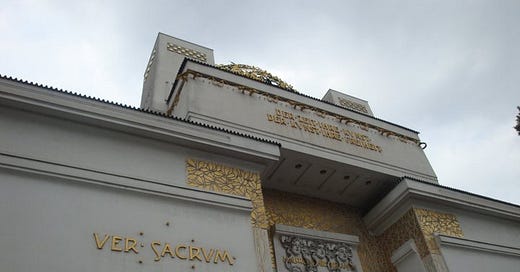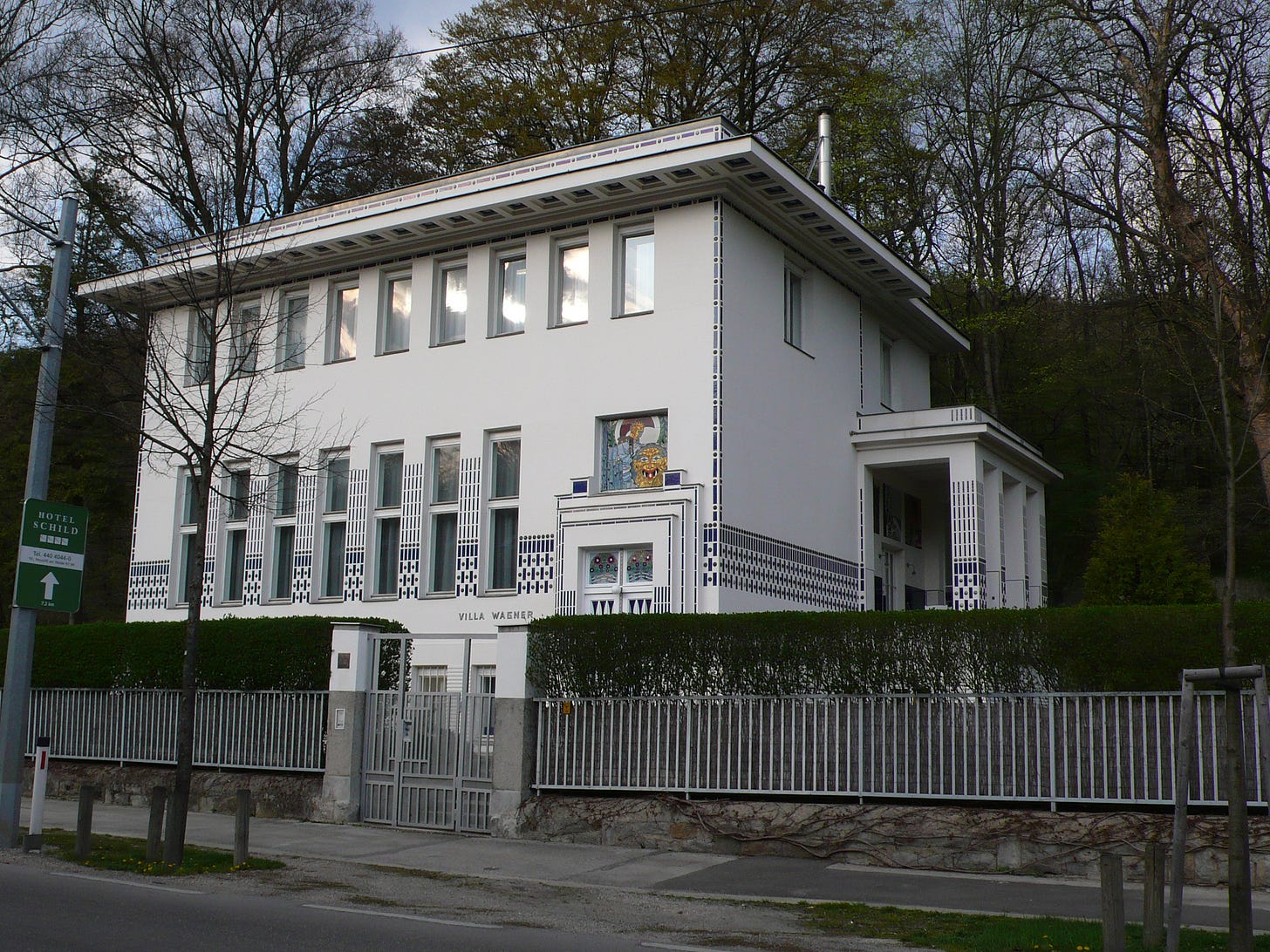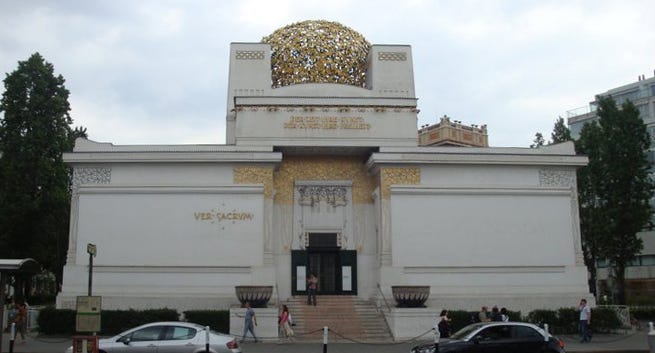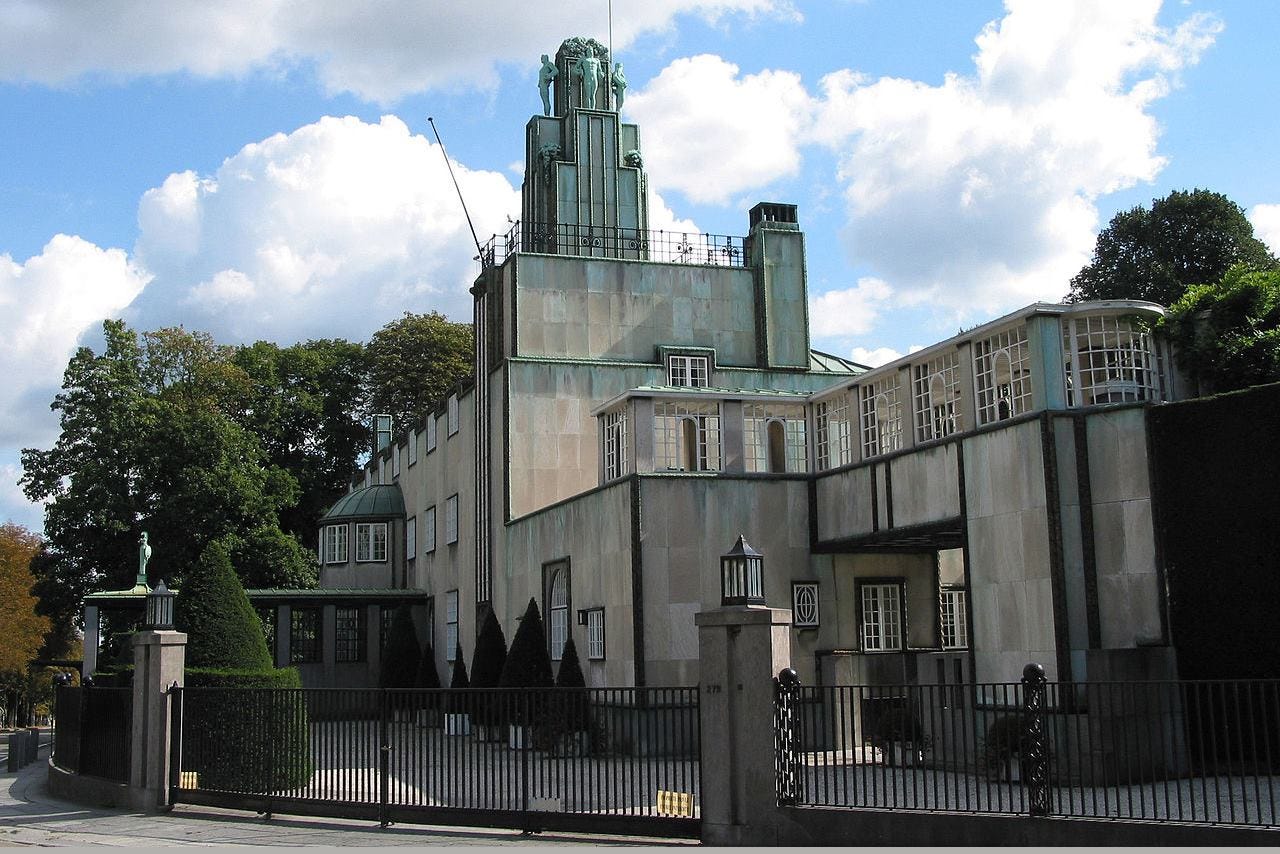Architectural Movements of Yesteryear 3: Secession Movement
When I wrote about Art Nouveau I mentioned that some include the Vienna Secession in the style of Art Nouveau. I also mentioned that Art Nouveau is not my favorite of the movements that were influenced by the Arts and Crafts movement. The title for “Bill’s Favorite Movement from 1880-1920” belongs to the Vienna Secession. A few reasons I prefer this style is that it is the first time we see simplified building form. It’s the first time we see plain white mass used as the primary geometry. If you look closely at some of these designs, you can see how easily the building could be mistaken for a Corbusier or Adolf Loos design. I’ll dive more into their design beliefs in a future post, but here is an example of what I mean.
The Vienna Secession, like Art Nouveau, was an aesthetic that affected art, furniture, typography, etc. in addition to architecture. Unlike Art Nouveau, the Vienna Secession was an official movement that took place a little after Art Nouveau from 1897-1914. They basically started a club for innovative design, the first of it’s kind really. In the future you will see this play out similarly with the Werkbund (which many members went to after the Secession ended), Bauhaus (which many members of Werkbund joined), and the Prairie School (which might have been a cult). They even had a clubhouse that one of their members designed, Secession Hall by Joseph Olbrech.
Above the entry they even have their motto “To every age its art, to every art its freedom”
The Secession style was yet another response to Revivalism. Many of the architects designed Revivalist buildings (Otto Wagner designed many buildings with everything from Doric Columns to Renaissance facades), but strived to expand on the innovations of the Arts and Crafts movement. The Secession movement includes similar motifs to the Arts and Crafts and Art Nouveau. Ornamentation is almost exclusively organic in nature. From the gilded stucco leaves on the facade and the gilded leaf spherical dome that Secession Hall holds like Atlas holding the world on his back. The main difference is the clean stucco facade. This is the primary contribution of the Vienna Secession to modern architecture. Up to this point, stucco was rarely used to make buildings with flat white facades. If stucco was used on a facade it was packed with ornamentation, left rustic and unfinished, and/or painted. Pulling back on the ornamentation allowed the form to unveil itself. Here are some examples from my trip to Vienna:
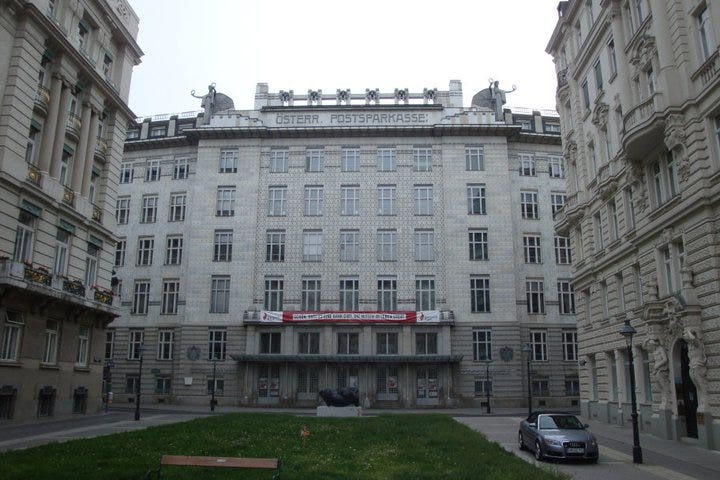
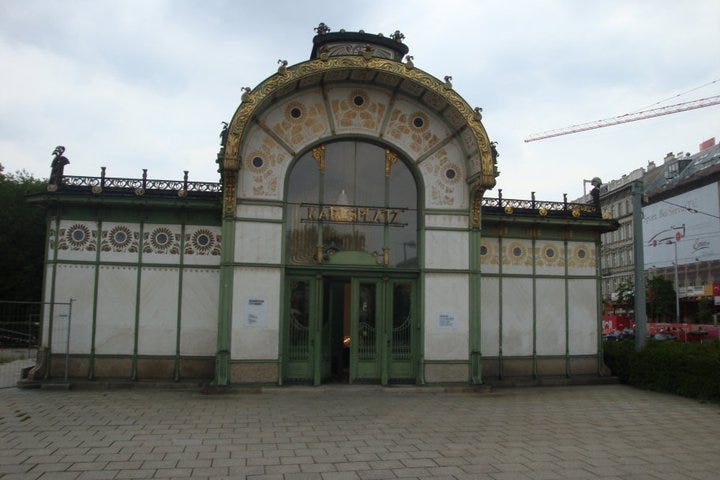
Here are a few I did not get to see, but are important to the movement:
As I mentioned there were artists involved in this movement, and probably the most famous member of the Vienna Secession is obviously Gustav Klimt. Some of his most famous paintings are housed in the Secession Building to this day. If Klimt doesn’t ring a bell, his art definitely will.
After this era, we see what happens when ornament is eliminated altogether. The potent ornamentation of the Secession gives way to all white compositions. It takes the idea of increasing negatives space to the inevitable extreme… facades became voids for decades. But first, I will take a look at Louis Sullivan and Organic Architecture.
“Architectural Movements of Yesteryear” is a series that explores the history of architectural movements preceding, including, and following the Modern Architectural Movement. My background for these posts will draw from my time in Architecture School (mostly Architecture History III at Kent State) and books/articles I have read since. I both attended the class as a student and as a teaching assistant for Architecture History III. Neither of these experiences make me an expert on any of these topics, but I do believe that it gives me enough information to create a blog post for public consumption and general understanding of these styles.”

